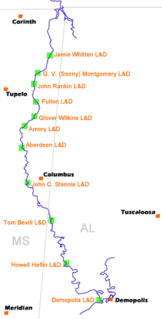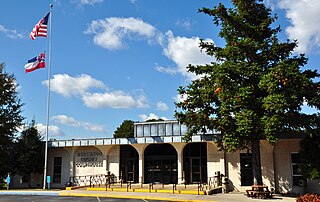| Wheeling, Mississippi | |
|---|---|
| Ghost town | |
| Coordinates: 34°08′27″N88°22′44″W / 34.14083°N 88.37889°W Coordinates: 34°08′27″N88°22′44″W / 34.14083°N 88.37889°W | |
| Country | United States |
| State | Mississippi |
| County | Itawamba |
| Elevation | 246 ft (75 m) |
| Time zone | Central (CST) (UTC-6) |
| • Summer (DST) | CDT (UTC-5) |
| GNIS feature ID | 706280 [1] |
Wheeling is a ghost town located in Itawamba County, Mississippi.

A ghost town is an abandoned village, town, or city, usually one that contains substantial visible remains. A town often becomes a ghost town because the economic activity that supported it has failed, or due to natural or human-caused disasters such as floods, prolonged droughts, government actions, uncontrolled lawlessness, war, pollution, or nuclear disasters. The term can sometimes refer to cities, towns, and neighbourhoods that are still populated, but significantly less so than in past years; for example, those affected by high levels of unemployment and dereliction.

Itawamba County is a county located in the U.S. state of Mississippi. As of the 2010 census, the population was 23,401. Its county seat is Fulton. The county is part of the Tupelo, MS Micropolitan Statistical Area.
Established in the early 19th century following the sale of the Chickasaw lands, Wheeling was a port on the Tombigbee River, located "a few miles below" the village of Van Buren. Wheeling had a hotel and merchants, though "its life was very short", and Van Buren absorbed its businesses. [2]

The Chickasaw are an indigenous people of the Southeastern Woodlands. Their traditional territory was in the Southeastern United States of Mississippi, Alabama and Tennessee. They are of the Muskogean language family and are federally recognized as the Chickasaw Nation.

The Tombigbee River is a tributary of the Mobile River, approximately 200 mi (325 km) long, in the U.S. states of Mississippi and Alabama. Together with the Alabama, it merges to form the short Mobile River before the latter empties into Mobile Bay on the Gulf of Mexico. The Tombigbee watershed encompasses much of the rural coastal plain of western Alabama and northeastern Mississippi, flowing generally southward. The river provides one of the principal routes of commercial navigation in the southern United States, as it is navigable along much of its length through locks and connected in its upper reaches to the Tennessee River via the Tennessee-Tombigbee Waterway.

Van Buren is a ghost town located in Itawamba County, Mississippi.
The former settlement is today covered by forest, located on the east bank of the Tennessee–Tombigbee Waterway.

The Tennessee–Tombigbee Waterway is a 234-mile (377 km) man-made waterway that extends from the Tennessee River to the junction of the Black Warrior-Tombigbee River system near Demopolis, Alabama, United States. The Tennessee–Tombigbee Waterway links commercial navigation from the nation's midsection to the Gulf of Mexico. The major features of the waterway are ten locks and dams, a 175-foot-deep (53 m) cut between the Tombigbee River watershed and the Tennessee River watershed, and 234 miles (377 km) of navigation channels. The ten locks are 9 by 110 by 600 feet, the same dimension as the locks on the Mississippi above Lock and Dam 26 at Alton, Illinois. Under construction for twelve years by the U.S. Army Corps of Engineers, the Tennessee–Tombigbee Waterway was completed in December 1984 at a total cost of nearly $2 billion.











